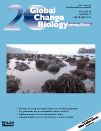Mobley et al., 2015
Surficial gains and subsoil losses of soil carbon and nitrogen during secondary forest development
Mobley, Megan L., Kate Lajtha, Marc G. Kramer, Allan R. Bacon, Paul R. Heine and Daniel deB. Richter (2015)
Global Change Biology 21(2): 986-996
-
Calhoun, COLLABORATOR
-
Christina, INVESTIGATOR
-
Calhoun, INVESTIGATOR
-
Calhoun, STAFF
-
Calhoun, INVESTIGATOR
Abstract
Reforestation of formerly cultivated land is widely understood to accumulate above- and belowground detrital organic matter pools, including soil organic matter. However, during 40 years of study of reforestation in the subtropical southeastern USA, repeated observations of above- and belowground carbon documented that significant gains in soil organic matter (SOM) in surface soils (0–7.5 cm) were offset by significant SOM losses in subsoils (35–60 cm). Here, we extended the observation period in this long-term experiment by an additional decade, and used soil fractionation and stable isotopes and radioisotopes to explore changes in soil organic carbon and soil nitrogen that accompanied nearly 50 years of loblolly pine secondary forest development. We observed that accumulations of mineral soil C and N from 0 to 7.5 cm were almost entirely due to accumulations of light-fraction SOM. Meanwhile, losses of soil C and N from mineral soils at 35 to 60 cm were from SOM associated with silt and clay-sized particles. Isotopic signatures showed relatively large accumulations of forest-derived carbon in surface soils, and little to no accumulation of forest-derived carbon in subsoils. We argue that the land use change from old field to secondary forest drove biogeochemical and hydrological changes throughout the soil profile that enhanced microbial activity and SOM decomposition in subsoils. However, when the pine stands aged and began to transition to mixed pines and hardwoods, demands on soil organic matter for nutrients to support aboveground growth eased due to pine mortality, and subsoil organic matter levels stabilized. This study emphasizes the importance of long-term experiments and deep measurements when characterizing soil C and N responses to land use change and the remarkable paucity of such long-term soil data deeper than 30 cm.
Citation
Mobley, Megan L., Kate Lajtha, Marc G. Kramer, Allan R. Bacon, Paul R. Heine and Daniel deB. Richter (2015): Surficial gains and subsoil losses of soil carbon and nitrogen during secondary forest development. Global Change Biology 21(2): 986-996. DOI: 10.1111/gcb.12715
 This Paper/Book acknowledges NSF CZO grant support.
This Paper/Book acknowledges NSF CZO grant support.
Explore Further






